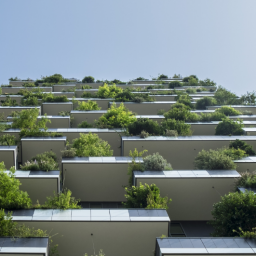
This post was originally from SMARTCITIESDIVE.
Greenhouse gas (GHG) emissions don’t adhere to jurisdictional borders and neither does COVID-19. Both these challenges require global collaboration—and rethinking our built environment offers a way to address both simultaneously. Buildings contribute to nearly 27% percent of GHG emissions globally, and achieving the Paris Accords’ goals requires reducing their climate impact via increased energy efficiency and clean energy sources. Energy efficiency is also a crucial component of energy security and reduced building energy consumption—and related GHG emissions—contributes to a lesser exposure to fuel price volatility. What’s more, accelerating building efficiency presents an enormous economic, societal, and environmental opportunity beyond energy savings. Retrofits helps modernize buildings, resulting in reduced emissions, improved air quality and occupant health, as well as in economic benefits due to reduced energy bills and creating local jobs which, by their nature, cannot be sent offshore. As we recover from the pandemic, we need to keep the power of building retrofits foremost in our minds.











